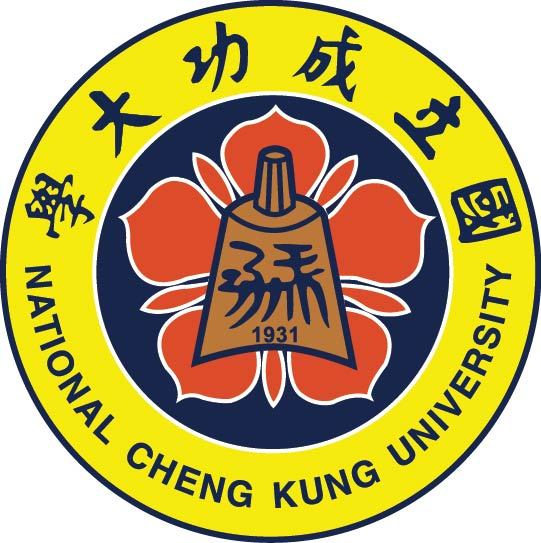Multi-Scale Molecular Simulation Lab
Research Field
Chi-cheng Chiu received a BSc in chemistry from National Tsing Hua University in 2003. He then moved to the University of Texas at Dallas and obtained his MSc in chemistry in 2007 for his work on studying proteins interacting with carbon nanotubes using molecular simulations under the supervision of Professor Steven O. Nielsen. He received his PhD in 2010 working on characterizing the interfacial energy at the nanoscale and the self-assembly of carbon based nanoparticles with biological membranes. He has been one of the faculty members of the Department of Chemical Engineering at National Cheng Kung University since 2014. Currently his research focuses on molecular simulation of soft matters, including bio-mimetic membrane systems, advanced polymer materials, and amyloid proteins.
Multi-Scale Molecular Simulation Lab (MSMS-Lab) led by Dr. Chiu in the Dept. Chemical Engineering at National Cheng Kung University has been focusing on applying molecular simulations to study soft matter and bionano materials. Over the past few years, MSMS-Lab's research has spanned the fields of protein folding and aggregations, self-assembly of nanoparticle and surfactants, functional polymer systems, and advanced simulation algorithm developments. All the research topics have been closely collaborate with experimentalists and theorists from various disciplines.
MSMS-Lab's research interests mainly focus on applying molecular simulations to study soft matter and bio-nanomaterials. Current research topics include:
- Bio-mimetic Membrane Systems
Phosphatidylcholine (PC) is one of the most common phospholipids and the major component of the cell membrane bilayer. Wrapping PC bilayers into hollow spherical structures results in PC vesicles, also named liposomes, which have great potentials in pharmaceutical applications. Yet the actual application of liposome is limited due to the high cost of PC. Ion pair amphiphile (IPA) is a complex composed of a pair of cationic and anionic surfactants after removing their residual counter-ions, resulting in a PC-like molecular structure. Therefore, IPA has been considered as one of the cheaper PC substitutes. In this project, we applied molecular dynamics simulations to characterize IPA bilayer properties from three different aspects: (1) examining the effects of alkyl chain lengths, (2) identifying the importance of cationic and anionic components of IPA via asymmetric chain length combinations, and (3) characterizing the effects of cholesterol additive on IPA bilayers. Simulations results showed that cationic components have greater effects on IPA bilayers in terms of both the membrane structure and the membrane elasticity. The anionic surfactants, in contrast, play more important role in the presence of cholesterol additive due the H-bonds between the their hydrophilic groups. The presented results provide valuable molecular insights into the IPA bilayer systems, which can serve as useful reference for fabricating IPA vesicles and future application designs.
- Protein Folding, Misfolding, and Aggregation
The fibril deposits of amyloid proteins are implicated in more than 20 human diseases, including Alzheimer’s disease, Parkinson’s disease, and type II diabetes. Yet the aggregation mechanism of amyloid fibrils remains illusive. Specifically, the amyloid fibrils of human islet amyloid polypeptide (hIAPP), or human amylin, are closely related to the development of type II diabetes. In this work, we utilized atomistic molecular dynamics combined with advanced sampling techniques to study the conformations of hIAPP monomers, oligomers, and mature fibrils and the corresponding conformational free energies. We compared the simulation data with experimental data to study the molecular mechanism of hIAPP fibril formation. We identified the aggregation mechanism of hIAPP and characterized the important intermediate species during the fibrillization process, which provides valuable insights into the future inhibitor designs. We also revealed new pathological roles of hIAPP where the aggregation of hIAPP triggers the deposition of nonamyloidogenic peptide.
- Polymer for Advanced Battery
We utilized molecular dynamics (MD) simulations to explore the effects of novel copolymer binder at the cathode/electrolytes interface. The radial distribution function and Li+ coordination analyses showed the interaction between Li+ and PF6- is reduced on the binder surface. The coordination around Li+ have gradually changed from EC and DEC solvent to polymer EO-segments as Li+ approaching the binder surface. Yet, the overall diffusivity of the surface bound Li+ is reduced as the surface EO-chain density increases. The combined results conclude that the addition of the EO chains can reduce the interaction between Li+ and PF6- but decrease the overall Li+ diffusivity on the binder surface. The two competing effects provide microscopic insights into the future designs of functional polymer binder.
- Simon Karecki Award { SRC/SEMATECH Engineering Research Center for Environmentally Benign Semiconductor Manufacturing 2010
- David E. Daniel Award (President Award), University of Texas at Dallas 2010
- Ph.D. Chemistry, 05/2010
- University of Texas at Dallas, Richardson, Texas, USA
- Advisor: Dr. Steven O. Nielsen
- Dissertation: "Molecular dynamics study of nanoparticles at fluid interfaces: from simple liquids to biological systems"
- M.S. Chemistry, 12/2007
- University of Texas at Dallas, Richardson, Texas, USA
- Advisor: Dr. Steven O. Nielsen
- Thesis: "Conformational study of nano-1 peptide at the water/carbon nanotube interface using molecular dynamics simulations"
- B.S. Chemistry, 06/2003
- National Tsing Hua University, Hsinchu, Taiwan
1 Vacancy
Job Description
Students who join the project will work on molecular simulation of advanced polymer , amyloid protein, or colloidal systems. Students with basic knowledge of statistical mechanics are preferred.
Preferred Intern Education Level
Master or PhD students
Skill sets or Qualities
Candidate with experience in coding / molecular dynamics / DFT simulations is preferred.
